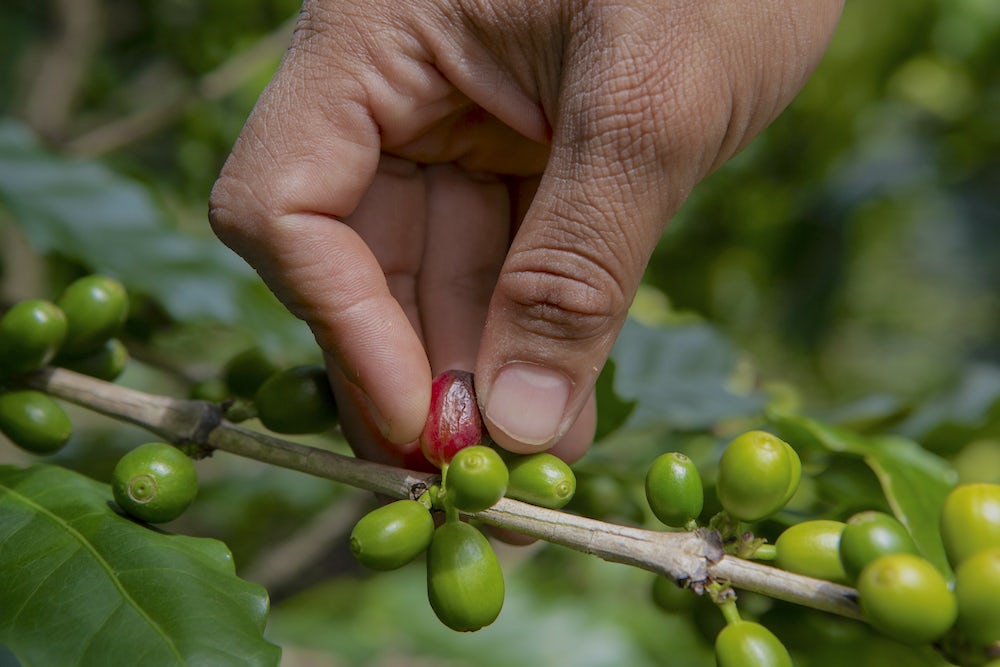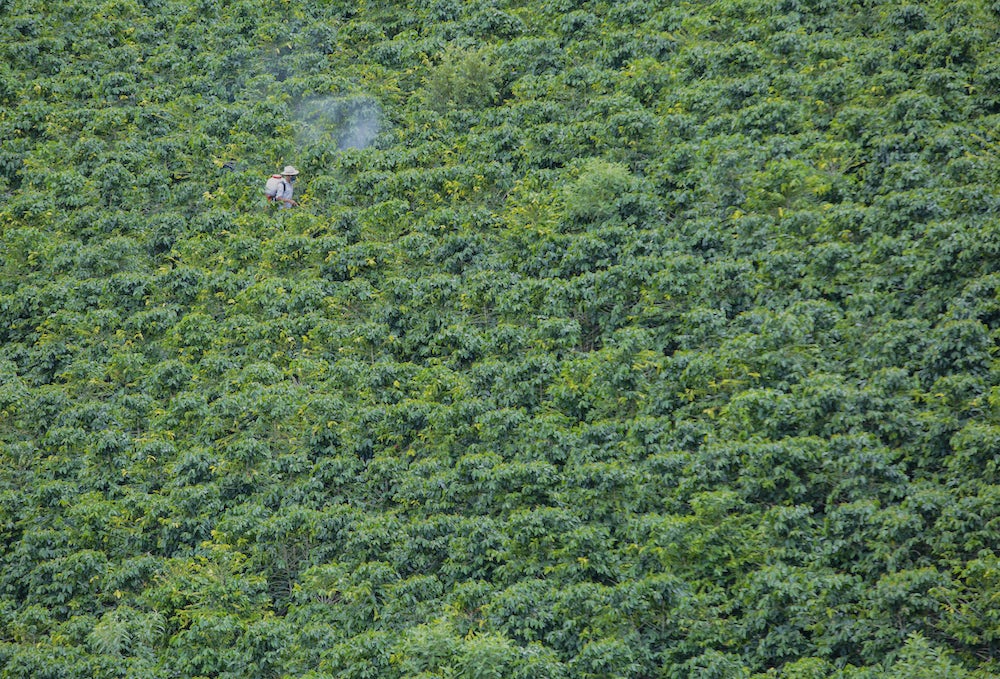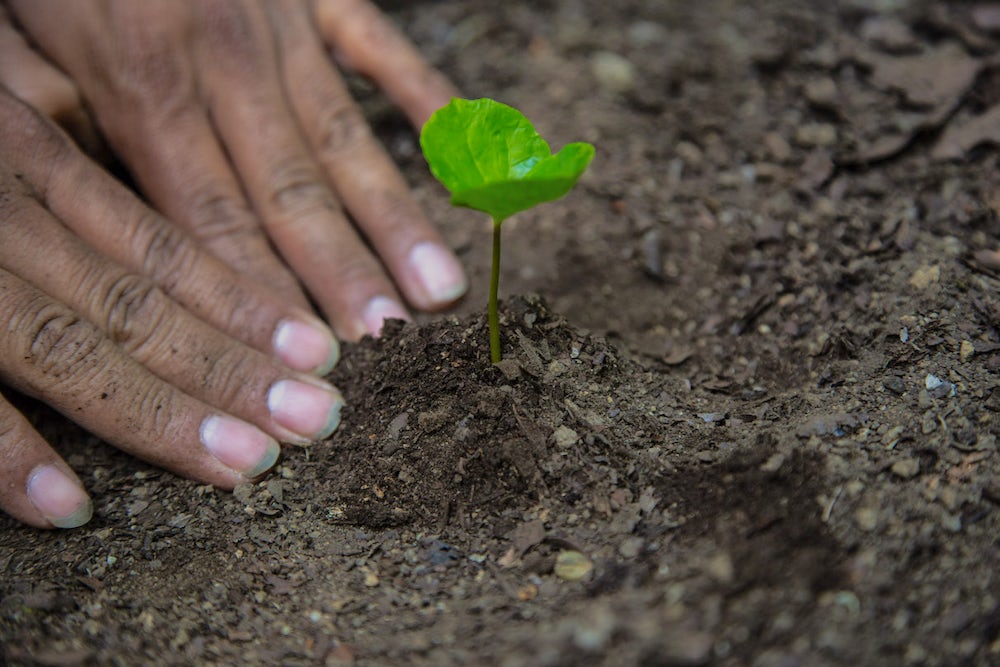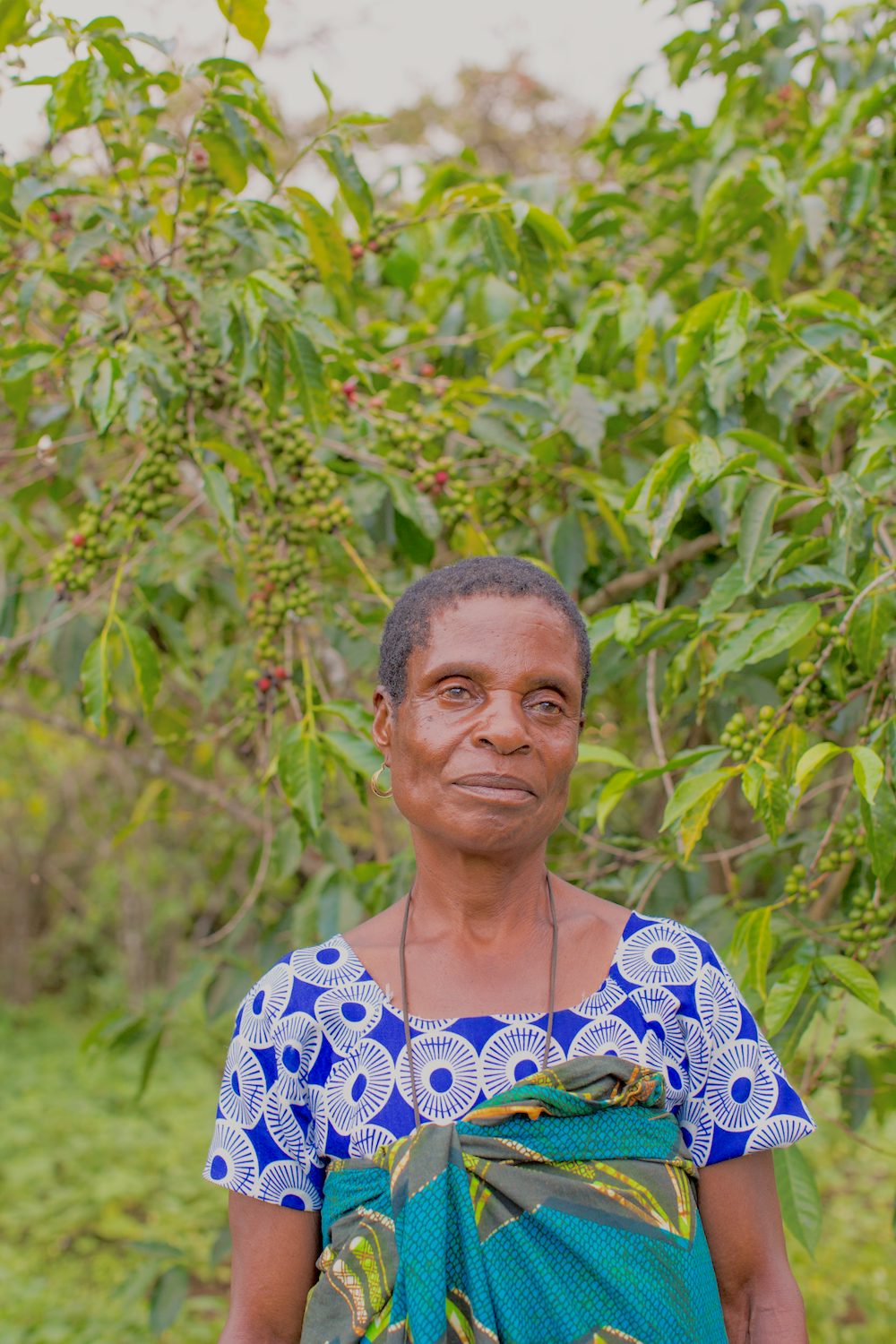Addressing systems of social, economic and environmental oppression is intrinsic to Heifer International’s work. As an organization, we strive to end hunger and poverty while caring for the Earth. But we must remember that poverty is not an accident. When specific groups of people experience similar forms of socio-economic marginalization, that is by design.
In this series, we are exploring the intersection of historical racism and agricultural development, examining the impact on Black, Indigenous and people of color to contextualize how hundreds of years horrors continue to shape and influence the lives of the families with whom we work.
For many of us, coffee is essential. We can’t imagine waking up without it, let alone navigating midday slumps or social catch-ups. It helps forge connections and brings us closer to those we care about, stimulating our minds while creating moments of pure sensorial experience. As a nation, our collective love is growing practically by the minute, evidenced by the steadily increasing rise in cafés, roasters, bottled brands and overall consumption over the last decade. Today 64% of Americans drink coffee daily, tallying around 400 billion cups a year.

Despite the bright spot coffee can be in our lives, it has a dark side — a sinister past that has spurred a troubling present. During centuries of global coffee production, a common theme has emerged: the oppression of people of color for profit. As Christine A. Jones, a professor of world languages and cultures at the University of Utah, put it, “I think of coffee as one of those luxury commodities that illustrates the deep, profound juxtapositions of slave trade; human labor to exploit the possibility of human luxury.”
A Bitter History
It is undeniable that the Atlantic Slave Trade played a critical role in shaping today’s coffee industry. Over the course of 400 years, approximately 11 million Africans were captured and thrown onto slave ships, spending the rest of their lives unwillingly trading their labor and well-being for a coffee trade which spurred the economic and geopolitical success of European colonies.
Coffee is indigenous to Ethiopia, where it still grows wild in ancient forests. Eventually, it made its way to the southern Arabian Peninsula through the port of Al Mokha. While the exact export story is ripe with speculation, many historians believe slaves brought seeds (in the form of coffee cherries) as a food source on the boat. It is certain modern Yemen is where coffee was first commercially grown.
By the 15th century, it was the most popular beverage in the region, served at coffeehouses to local merchants and Venetian traders conducting business. News of this magical brew soon spread around the world, percolating huge global demand. Arabia became fiercely protective of the crop, prohibiting trade of its seeds and even requiring all beans be boiled before export to ensure their infertility. This coffee monopoly was maintained by the Ottoman Empire until the late 1600s, when the Dutch stole viable seeds, smuggling them out of Yemen for cultivation in their Indonesian colonies. The coffee seeds landed on the island of Java, where the Dutch quickly established vast plantations using stolen land and an indentured Javanese workforce. The labor was brutal, with human death considered an acceptable cost of production. Entire villages perished from starvation as a direct result of treatment by the Dutch.

By the mid 1700s, other European powers were acutely aware of coffee’s profitability. As demand soared beyond what Dutch Indonesia could supply, British, French, Spanish and Portuguese colonialists joined the trade. These global powers took both plants and people from West Africa, shipping slaves like cargo to establish plantations in the Caribbean and Americas. By 1788, half the world’s coffee came from African slave labor in French-occupied Haiti. Conditions there were marked by a combination of torture, malnutrition, overwork and unsanitary living quarters. The idea was to grow the crop as cheaply as possible, at the expense of human life.
Meanwhile, Portuguese-colonized Brazil quickly gained momentum as a leading coffee producer. By the early 1800s, Brazil accounted for 30% of the world’s production of coffee, all of which was grown on the backs of two million people stolen from Africa. From time of bondage, the average life expectancy of a coffee slave in Brazil was a mere seven years, likely because it was widely acknowledged among plantation owners that importing new slaves after they died from overwork was cheaper than providing the necessary conditions for keeping them alive. This system lasted until 1888, three years after the United States legally abolished the practice of owning human beings.
In Central America, colonized by the Spanish, coffee depended on stolen land and forced work from Indigenous peoples. Mayans and other native populations served as “semi-slaves,” with the only real difference being a lack of formalized legal structure for human chattel. And, as these groups occupied fertile land ideal for growing coffee, they were forcibly removed and coerced into cultivating their ancestral land, now owned by their tyrannizers. If anyone tried to maintain autonomy, the military response was violent and brutal.

The simultaneous spread of coffeehouses in Europe added another disturbing layer to coffee’s history. From the 17thto 19th centuries, as slavery fueled coffee production, cafes became centers of economic activity and trade. According to Mark Ellis, author of The Coffee House, merchants met to sip coffee and discuss “procuring the goods or capital for that very industry.” Black bodies were considered both, as they were used as a form of credit and negotiated as part of financial transactions. Amidst plush seating and invigorating aromas, it was not uncommon to hear complex deals being made for combinations of plants and people.
An Acrid Reality: On the Farm
More than 600 years later, the system looks different on the surface but shockingly little has changed. Following in the legacy of colonialism, people of color continue to be the industry’s backbone, providing labor and wealth-generating coffee beans with little-to-no compensation. The gap between the haves and have-nots continues to widen in the coffee industry, with an apparent racial and ethnic divide separating the two.

In 50 countries across Africa, South America and Asia, 125 million people depend on coffee for their livelihoods. Of that group, 63% live in poverty and 71% in extreme poverty. For small-scale coffee producers, those numbers are closer to 100%. Virtually all are Black, Indigenous and people of color. They toil among the flowering plants from before sunrise to well after sunset, carefully tending the crop to meet demands of even the most discerning palettes. Everything is done by hand, from selecting only the most perfectly ripe cherries to carrying 132-pound sacks for miles down steep mountainsides. The forest canopy sequesters carbon and builds humus, with the soil lovingly tended with natural techniques; out of all agricultural land uses, holistically managed shade-grown coffee is considered the most beneficial for biodiversity. They practice careful record keeping and documentation, ensuring buyers have the information necessary for traceability and transparency. However, despite all the incredible things these farmers do for their communities and ecosystems (not to mention consumers), they are paid pennies in return for their hard work and often don’t even earn enough to cover the expense of producing the beans, let alone to provide for their families.
Steadily declining market rates have been the norm in coffee for many years. As a result, farmers are financially worse off today than they were 50 years ago. Coffee prices in 2020 are more than four times less than they were in the early 1980s which, when accounting for inflation, would be as if the minimum wage of $3.35 back then were reduced to $0.83 today. It costs around $2.30 per pound just for producers to break even over the long term, and between $1.87 and $3.50 per pound to reach a living income – the net income needed to maintain a decent standard of living. As a result, households experience scarcity of nutritious food, inability to seek medical care and failure to keep up with basic expenses. Children are increasingly pulled out of school due to lack of funds, and many families fall into inescapable debt that costs them their farms and potentially lives. And so continues an age-old approach of denying populations food, health, education, adequate housing, etc., in order to stem their advancement.

A more visible racial hierarchy permeates larger-scale plantations. Farm owners tend to be of European descent, while farm workers are largely represented by Indigenous and ethnic minority groups. These farmworkers are grossly underpaid, usually far below national minimum wages. During harvest season they spend nights sleeping 60-people deep on the floors of cramped, dirty rooms. Latrines and showers are often unavailable, so nearby fields and rivers are used instead. Lack of protective equipment against everything from venomous snakes to poisonous pesticides are the norm, and clean drinking water is in short supply. Workers are often enslaved in all but name, forced to pay off debts through labor. On plantations with a permanent labor force, it’s all-too-common to be both subjected to pittance wages and, for a variety of reasons, cut off from local markets. “Employees” are forced to purchase essentials at hugely inflated prices from an estate store, pushing them further into debt. It’s not unusual for payment systems to be rigged, through manipulated scales or mysteriously misplaced coffee during weighing. All of this intentionally perpetuates indentured servitude, as the workers are then forced to stay until they can pay back whatever was borrowed.
Even more overt modern-day slavery is pervasive across the industry and especially prevalent in Brazil. The situation doesn’t seem to be improving despite product certifications. In fact, since 2014, labor officials have led 25 investigations into forced labor and other human rights violations in Brazil’s coffee sector, and experts widely acknowledge the number of reports pale compared to the actual scale.
Child labor is similarly exploited in coffee, with Brazil again assuming the role of worst offender. A recent study found exploitation rates of child labor to be 37% higher in Brazil than in other coffee-producing countries, with children young as 6 years old working 10-hour days while suffering exposure to health and safety risks. This is especially notable remembering Brazil’s history of slavery, which was the defining factor in its rise to coffee domination. Today, Brazil remains the biggest and most influential producer of coffee in the world, reaping significant profits for large plantation owners and associated companies. And like the 1800s, these economic winners have noticeably darker skin than the farmworkers.
After hundreds of years, little has changed for coffee producers. Today, wealthy North American and European companies profit off an exploited labor force, an issue we examine — in addition to sharing ways to support coffee farmers — in our follow-up piece, “Rooted in Racism: Dark Profits in the Coffee Industry.”